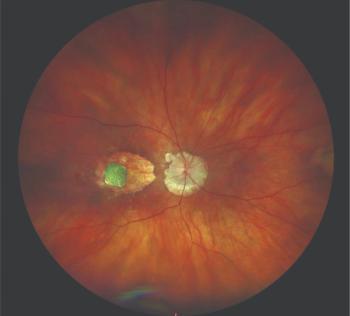
SLT effective as both a primary and secondary treatment for glaucoma
Selective laser trabeculoplasty (SLT) is effective as both a primary and a secondary treatment for patients with ocular hypertension or primary open-angle glaucoma (POAG), according to the results of two studies presented at the Ellex symposium.
Selective laser trabeculoplasty (SLT) is effective as both a primary and a secondary treatment for patients with ocular hypertension or primary open-angle glaucoma (POAG), according to the results of two studies presented at the Ellex symposium.
Professor Shlomo Melamed outlined the results of a prospective, non-randomized study investigating SLT as a primary treatment for POAG in 45 eyes of 31 patients. Patients were evaluated for visual acuity (VA) and underwent slitlamp examination, ophthalmoscopy, gonioscopy and visual field analysis both before and at selected intervals after SLT. Intraocular pressure (IOP) was measured one hour, one day, one week and one, three, six, 12, 15 and 18 months postoperatively. Topical antiglaucoma medications were administered as required.
The results showed that mean ± SD decreased from 25.5 ± 2.5 mmHg preoperatively to 17.9 ± 2.8 mmHg postoperatively. A total of 40 eyes (89%) demonstrated a decrease of 5 mmHg or more. Three eyes required topical medications to control IOP and two eyes did not respond to the SLT. Complications included conjunctival redness and infection within one day postoperatively in 30 eyes (67%). An increase in IOP of more than 5 mmHg was found in five eyes (11%), one hour after SLT, while an increase of between 2 and 3 mmHg was detected in three eyes (7%).
Based on the results of this study, Dr Melamed concluded that SLT is an effective and safe option for the primary treatment of OAG.
In a second presentation, Professor Isabelle Riss, France, outlined the benefits of SLT as a secondary, or adjunctive, treatment and found it to be just as effective.
Riss conducted a study of 60 patients with ocular hypertension and glaucoma, two patients had been operated on previously and a further two patients were aphakic. The mean age was 67 years (range 14 to 75 years). The SLT was focused on the pigmented trabecular meshwork at an energy level of 0.7 mJ per pulse. The energy level was reduced in the treatment of heavily pigmented eyes.
The results showed mean postoperative IOP to be 4.6 mmHg, a 22% reduction, at six months follow-up. Interestingly the patients who had the highest preoperative IOP levels, underwent the more dramatic drops in pressure, whereas the patients with relatively low preoperative IOP received little change. Side effects included three patients with mild red eye, one with blurred vision and one aphakic patient's IOP spiked at 50 mmHg two days after treatment. The race of patients and gender had no significant effect on results.
Riss concluded by outlining, what she sees as, the main benefits of SLT as an adjunctive treatment: a reduction in IOP of between 20-40% is regularly seen six weeks postoperatively, there are very few side affects, the treatment can be repeated and it is a useful alternative for those patients who are allergic to topical medications.
Both Melamed and Riss agreed that SLT offers significant benefits over argon laser trabeculoplasty (ALT). Melamed spoke of the "circle of destruction" that is caused by ALT, whereas SLT is far less invasive and Riss discussed how it took a much longer period of time for the negative effects of ALT to be discovered. Furthermore, SLT treatment can be repeated more than twice unlike ALT. They concluded that, although ALT and SLT offer statistically similar IOP reductions, SLT provides a much safer option.
Ophthalmology Times Europe reporting from the XXIV Congress of the ESCRS, London, 9-13 September, 2006.
Newsletter
Don’t miss out—get Ophthalmology Times updates on the latest clinical advancements and expert interviews, straight to your inbox.





